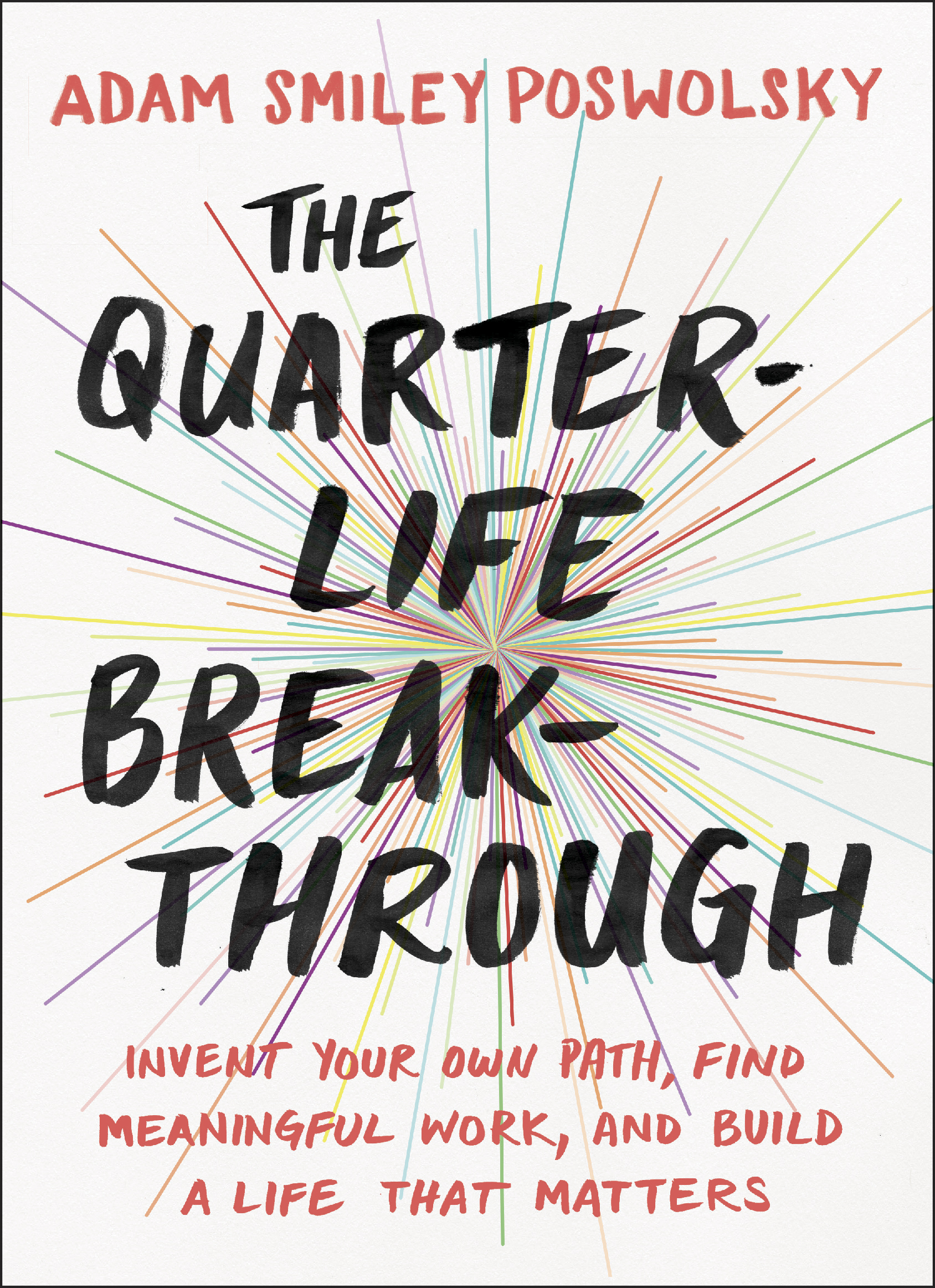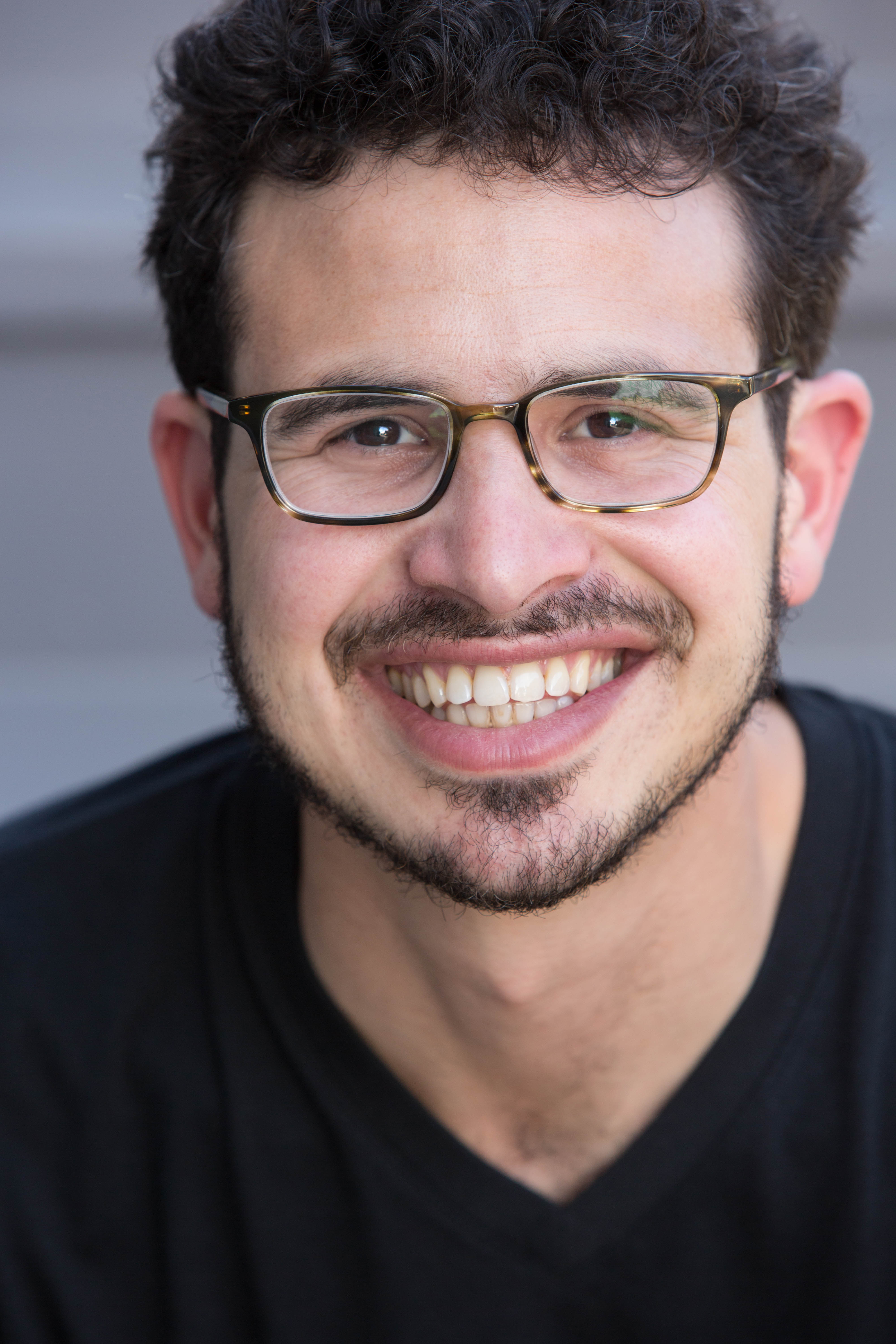‘There’s Always a Reason to Be Scared’: Using Fear to Achieve Your ‘Quarter-Life Breakthrough’

As a 20-something myself, I can confirm that the quarter-life crisis is a very real phenomenon. It often starts with the nagging suspicion that your life isn’t going the way you had planned – and sometimes it can end in total self-destruction.
Thankfully, that hasn’t happened to me – and it probably won’t happen to you, either, if you pick up a copy of Adam Smiley Poswolsky’ The Quarter-Life Breakthrough, a new career guide specifically for 20- and 30-somethings looking for more meaningful work, out this week from TarcherPerigee.
Smiley says the book was born from his own quarter-life crisis, which he underwent while working for the Peace Corps in Washington, D.C. To everyone else, Smiley seemed like the picture of success – and yet, something was missing from his life.
“If I wasn’t happy at the Peace Corps, where the hell would I be satisfied working?” he muses in the book’s introduction.
Eventually, Smiley quit his job and moved to San Francisco to become a writer – and you can see that worked out pretty well for him.
But that’s not to say the advice contained in The Quarter-Life Breakthrough amounts to the same old “follow your dreams!” platitudes that plague other career guides. Instead, Smiley draws on his own experience – as well as the experiences of hundreds of other young people whom he interviewed over the years – to craft a book that skips the vague slogans in favor of an actionable plan.
“This is a guide for people figuring out what to do next with their lives – an unconventional career guide to help you figure out what you want to do, how you can give back, and how you can make an impact in the world,” Smiley says.
Last week, Smiley and I hopped on a phone call to discuss his book. Below is a transcript of our conversation, minimally edited for style and clarity:
Recruiter.com: This book is clearly targeted toward young people and their challenges. Aside from age, is there a difference between the “quarter-life crisis” and the “mid-life crisis”?
Adam Smiley Poswolsky: To be perfectly honest, I think the principles in the book of finding meaningful work apply to people of all generations. However, I didn’t think it was appropriate necessarily as a 30-year-old to be giving advice to someone who is twice my age.

I self-published a version of this book two years ago, and I’ve had a lot of people who are dealing with mid-life crises or switching careers at the age of 48 or 54 say, “Hey, this book really helped me.” But I think that if I had just called itThe Breakthrough or whatever, it would lose its direct resonance.
They always say you should write what you know, and this is what I know. I don’t know what it’s like to have two kids and a mortgage. I’ve never been married. Those things add another layer to how you build a meaningful life. Because I haven’t experienced those things, I didn’t think it was appropriate to talk about them.
I definitely want to write The Mid-Life Breakthrough at some point – just give it 10 or 15 years.
I also think, when you’re at this stage in life, the stakes are lower. Well, in one way, the stakes are higher because you’re setting yourself up for what you do in the future. But you can take more risks. You can leave a job that’s not working, even if it might be a financial risk for six months. You don’t have two kids to feed, and you’re probably renting an apartment, so there’s a little more leeway there in terms of inventing your own path. If you are 10, 15, or 20 years older, it’s still possible to do that – but there are more things to consider.
RC: In the book, you talk about “climbing the career ladder” vs. “jumping lily pads.” Can you elaborate on what that means, exactly?
ASP: We have a career mindset that has not caught up with the current realities of the job market. This idea of “the career ladder” is an antiquated notion. It was applicable to the baby boomer generation, that idea of going to college, picking a major, getting a job out of college that reflects something you studied, and getting on that ladder at 20 or 21 and moving up the ladder throughout your career until retirement.
If you look at a lot of people’s career paths now, they don’t follow this linear path, especially in the last ten years, with the recession, rapid changes in technology, an increasingly freelance- and flexible-job-oriented market, and shorter job tenures. We need a mindset that embraces this instability and provides a more flexible and experimental notion of what a career can be.
I think people talk about this, and you read about it in places like Fast Company, but they don’t tell college students about it. The career advisors don’t say, “Hey, you need to prepare for your next 15 jobs, not your first job.” You can’t just focus on that first job. Even if it’s great, it’s probably only going to last for two or three years, statistically speaking.
I think the much more empowering way of looking at your career is the lily pad metaphor. If you think about lily pads, you can go in any direction. They’re all connected – the roots of the lily pads are connected by what is meaningful to you – so while the surface of what you’re doing might look different, you can move in all these directions to find work that means something to you.
Like for me, I went from working at the Peace Corps in D.C. to moving to San Francisco and becoming a writer. It looks different, but I could make that jump because it was something meaningful and it excited me.
Sometimes, young people hear this metaphor and think, “Great! I’m going to quit my job and move to Thailand because Smiley told me to jump lily pads!” That might be what our hearts want to hear, but I’m very serious about this in the book. This is about finding meaningful work, not taking a meaningful vacation. Just because you can hop lily pads and might have to because of the current job market and economy, that doesn’t mean you make reckless decisions. It doesn’t mean you don’t think strategically about what you’re building toward.
One of the things that has influenced my thinking about this is technology. If you think about rapid prototyping or how products are launched today – where they do things like A/B testing and such – this is how we should approach our careers, too. We have to think about what works for us without taking 20 or 30 years to do so. Instead, we should be looking at six-month or three-month internships, apprenticeships, jobs, gigs, freelance opportunities, consulting opportunities, whatever. We need to say, “Hey, I’m thinking about this job. I wonder if they could bring me on for a short-term project to see if I really like it and they like me.”
You see a lot of companies starting to do this now with rotational programs to see whether a person actually fits in the company. The only way to know that for is to get the on-the- ground experience.
RC: You also talk about the importance of embracing fear in order to find meaningful work. Obviously, we don’t usually look at fear as a positive thing. Why is fear important to having a quarter-life breakthrough?

Adam Smiley Poswolsky
ASP: I’m someone who has a lot of fears. I know that if you’re constantly using fear as a red light, you won’t do anything. There’s always something to be scared of. One of the things I realized when I started to put my writing out there was that if I’m scared of publishing a piece, there’s probably a reason for that – and maybe the reason is because it’s something I actually need to do.
I think it’s really important to use fear to take action. I have a section in the book about taking your fears and turning them into research. We’re all scared of things – scared of publishing a book, or starting a business, or working on a new project, or changing fields. You can just tell your friends you’re scared, or you can take the action steps to gain more knowledge in that area and be less scared.
If you say, “I’m not qualified for this role” — while, are you actually not qualified? Did you do the research? Did you find out that a position requires skills you don’t have? Okay, so you’re not qualified yet. Now, how do you get those skills?
Often, this leads to these baby steps that help you embrace your fear and move toward meaningful work, like reading a book, taking a class, setting up coffee dates, doing more research, or volunteering.
RC: Chapter six is about “the infinite paths to meaningful work.” For some people – even myself – that might sound kind of paralyzing, having all those options. How do you see it? Is this an empowering idea to you?
ASP:This is really important. It’s a very honest and truthful section of the book for me. All too often, if you’re in the career advice or coaching space like I am, you hear things like, “Do what you love! Follow your passion! Start your own business!” It all boils down to “Quit your awful job and live the dream!”
But if you actually interview people – and I interviewed hundreds of people for this book over the past four years – you find that this narrative is only truthful in one or two cases. The majority of cases are completely in between. What’s more likely is you have someone who wants to quit their job, but instead they start a blog on the side about something they’re interested in. Then, in eight months, they actually start a business – because they needed to save some money first, or gain some experience, or maybe they just liked certain aspects of their day job.
I think entrepreneurship is a great path for people, but it’s not for everyone. Working for yourself is really hard. Sometimes, you can have more of an impact if you work for another company that is more established and has more resources. I wanted that truth and those narratives to be told. I know it can be intimidating to read that section. You might think, “I thought I was just supposed to discover what was meaningful to me and then do it!” But the way it looks in practice is that there are so many possibilities.
This is really how the lily pad metaphor comes to fruition, because you realize, “Woah, I can do meaningful work in this area in seven different ways. I can start my own business, or I can work for a tiny startup, or I can split my time between freelancing and another job.”
It’s a little intimidating, but it’s truthful. This is the reality of the current job market. There is no single right answer for how to find meaningful work, and any books that say there is – great, good for them, but I disagree. Even if you know what is meaningful to you, there are so many ways to go about it. My hope is people will feel inspired and say, “Okay, I’m going to try one of these paths.” It doesn’t have to be the be-all and end-all. I think that’s an empowering framework.
RC: Well, Adam, those are the end of my questions – but was there anything else you wanted to mention before I let you go?
ASP: Yes – there’s one thing that I think is really important that a lot of books in the career space don’t touch on: building a community.
Every career books touches on networking. That’s something people are always talking about. But for me, it’s about community building.
I have a section in the book on finding believers, and I truthfully believe the reason that I was able to have my quarter-life breakthrough was because of the people I started to surround myself with. It’s not just networking – being on LinkedIn, going to conferences, and handing out business cards. It’s actually the opposite of that. It’s about building deep relationships with people who share similar values and interests – people who are going to be supportive of you and whom you’re going to be supportive of.
If the people you are surrounding yourself with aren’t making you better, aren’t inspiring you, aren’t pushing you to reach for your dreams, you need to start finding some new friends. On paper, I was a very successful 28-year-old. I was working for the government in D.C., and I was surrounded by a lot of successful people – but I hadn’t yet found believers. It’s an important contrast. You have friends to watch the game with or have a drink with, but that’s different from having believers in your life.
It can be incredibly hard for people to find communities of believers outside of major cites, and I wanted to include in the book a resources section that lists some purpose-driven communities, but we didn’t have space. I put it online, though, so people can see it there.

